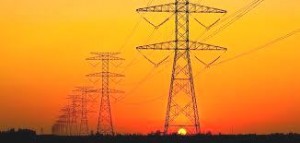Ugandan power projects to come online as distribution lags
July 21—The government has been told not enough thought or money is being put into developing domestic low power voltage lines as construction of the 180MW Isimba and the 600MW Karuma hydro-electric power dams enter the final stages.

The government has done well in improving the high-voltage network to cater for Isimba and Karuma dams, but distribution to domestic users is lagging far behind.
Eng. Dr Frank Ssebowa, a power consultant with Frank Energy Consultants said, “The construction of the two plants is moving fast and by the end of 2018 Isimba will be producing some power, but below its total capacity. Where are we going to sell that electricity?”
“The government should put in place a mechanism for such power to reach the end users in time. Government needs to invest more in distribution, because it has done very well in generation and transmission. But for it to have economic value then government needs to distribute that power to the end user,” he said.
Mid this year, the World Bank published a report that highlighted the point that transmission infrastructure is a crucial middle part of the electricity value chain. Alongside generation and distribution, improving and increasing transmission infrastructure is key to closing the access gap. So far, transmission in Africa has been financed from public sources and new models of financing involving the private sector have received insufficient attention from policymakers or financiers.
Eng. Ssebowa is a former executive director at the Uganda Electricity Regulatory Authority. He said the government has tried to develop the infrastructure for high voltage lines to evacuate power from Karuma and Isimba, but is silent on the final distribution lines that will connect to domestic users.
He was speaking at the Energy and Power breakfast meeting organized by Frank Energy Consultants Limited. Eng. Ssebowa said for the government to achieve its power accessibility projections, especially in rural communities, more focus should go to expanding the low voltage distribution network.
Umeme, the listed utility that holds a government concession to distribute electricity in Uganda, said it was already working on an expansion programme.
Sam Zimbe, the deputy Managing Director of Umeme told 256BN, “Under our investment plan, we are planning to increase on our distribution network as power distributor in the country. We have stated even establishing sub-power stations to beef up the quality of power being distributed in some localities because of the increasing demand for power,” he said.
According to Riccardo Puliti, Senior Director and Head of Energy and Extractives Industries at the World Bank, “Private finance has supported the expansion of electricity transmission infrastructure in many regions of the world and the same can happen in Africa. To attract private sector investment, however, governments need to adopt policies supportive of this strategy and establish the right business, regulatory and legal environment to sustain investor interest.”
Using both domestic and foreign financing, the government has been spending heavily on carrying out power line and substation improvements. Projects include the Bujagali-Tororo line, the Tororo- Opuya line in eastern Uganda then there is the Nkenda-Mputa- Hoima-Karuma line in the west and the Kawanda –Karuma line. The state-owned Uganda Electricity Transmission-company (UETCL) is managing the projects.
Official figures show only 7% of Ugandans living upcountry outside urban centres, have access to the national grid. For Uganda, as a whole, the figure is about 15%. In the government’s 10 year plan for rural electrification strategy (2013-2022), this figure is expected to reach 26% by 2022. The long-term objective is to improve access to 51% and finally 100% by 2030 and 2040 respectively.
However the government has also be advised to provide some financial support for distribution companies such as Umeme, Rural Electrification Agency and the West Nile Rural Electrification Company because network expansion in areas that are not financially viable will cost these companies more money.
The demand for power across the country is expected to go up due to development of costly new infrastructure. Following the launch of the Buy Uganda Build Uganda policy, there is a feeling that this will lead to increased demand for electricity by manufacturing and industry.

 African Heads of state head to South Korea next week for Summit talks
African Heads of state head to South Korea next week for Summit talks
 Trading leads as main source of income for Ugandans
Trading leads as main source of income for Ugandans
 New leadership for bankers’ umbrella as total assets top $12 billion
New leadership for bankers’ umbrella as total assets top $12 billion
 Brussels Airlines to announce Nairobi service
Brussels Airlines to announce Nairobi service
 SITA promises enhanced travel experience after Materna acquisition
SITA promises enhanced travel experience after Materna acquisition
 Saudia’s 105 aircraft order stretches A320neo lead over rival Max
Saudia’s 105 aircraft order stretches A320neo lead over rival Max
